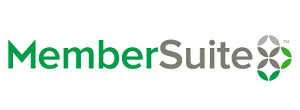
Shaun O’Reilly, VP of Marketing
Special to the Philanthropy Journal
By Shaun O’Reilly, Vice President of Marketing, MemberSuite
Nonprofits are mission-driven organizations that rely on quality data to deliver value to their members and industry. Fifty-three percent of nonprofits say it’s simple to collect program data, but putting that data into action can be more complicated. Only 47% agree that it’s easy to analyze and act on their findings.

When Marketing General Inc. (MGI) asked nonprofit and association professionals what keeps them up at night, it found that many were worried about the hygiene and quality of their data. This is a legitimate concern for organizational leadership who rely on data to make decisions that guide revenue strategy. Nonprofits and associations that appropriately use the data they collect to better understand the behaviors, preferences and interests of their constituents can better navigate the strategic planning process and establish core programming, marketing and content necessary to achieve their objectives.
From a development perspective, data can help nonprofit organizations identify and analyze important donor trends, which in turn informs the messaging and engagement tactics that influence acquisition – uncovering what works and what doesn’t. With these insights, nonprofits can build a complete development strategy that includes outreach, acquisition, retention and reactivation.
Data-informed decisions and change in organizational culture may seem like lofty goals, but they’re realistic ones. These goals are within reach if data management procedures and processes are in place to keep an organization’s data clean, complete and accessible. Here’s how it can be done:
Ensure Executive Sponsorship
Technology, like the right management software, is only one part of the data integrity formula. Every organization needs to appoint at least one executive who deeply understands the importance of data governance. This executive sponsor should ensure their fellow leaders and staff also recognize the value of their data and its impact. Data governance requires an organization-wide understanding that data isn’t just IT’s job; it is a strategic asset and should be recognized as such by executives, volunteer leaders and staff.
Build a Data Governance Team
With the support of the executive sponsor, organizations should form a cross-functional team of business owners or super-users of data. This team could include representatives from the development, membership, programs, communications and IT departments. Team members must be staff who understand the organization’s strategic goals and are committed to helping it leverage data to achieve those goals. This group should plan how the organization will collect, maintain and utilize the data for its benefit and ensure staff and leaders have the data they need to make decisions.
Appoint a Data Team Leader
The leader of the data governance team must be a business user of data, but not part of the IT department. The team leader must take ownership for the organization’s data and garner the support of staff leadership to champion and enforce data quality practices.
Duties of the team should include:
- Developing data entry procedures that promote accuracy.
- Creating a data style to ensure consistency.
- Developing a user guide that explains how to handle different scenarios, such as what to do if an email bounces, for example.
- Reviewing data integrity reports to identify problems such as missing or invalid email addresses.
- Working with the IT department to arrange security awareness training and to ensure internal systems comply with data security practices.
Properly Collect Donor Data
Data has a short shelf life, so the data governance team should follow a succinct strategy for data collection, maintenance and usage:
- Only collect what can be used. The more data an organization has, the more it must keep clean, update regularly and migrate to a new management system when needed. Organizations should carefully review their forms to make sure they’re not requesting unnecessary data.
- Regularly collect data. Associations ask members for information when they join, but is that data being updated? Members’ jobs, needs and interests change over time so their data should too. As data ages, it becomes more inaccurate. Find opportunities throughout the member journey to ask for new information.
- Widen data collection methods. Nonprofits don’t have to rely on infrequent surveys to understand their stakeholders. Learn more about constituent interests and preferences by tracking and analyzing their engagement data. For example, measure conversion rates for different campaigns, retention rates for participants and donors, and donor lifetime value.
- Describe the positive impact data makes. People are more willing to provide data when they understand how it will be used. Emphasize how up-to-date data can help organizational leadership understand requests and preferences and ultimately provide more value to the communities the organization serves. Having stronger data helps organizations target the right people at the right time and lower costs associated with the process. Privacy concerns should be alleviated if individuals understand the full impact of a data request.
- Talk about data security. Become an industry leader on cybersecurity. Let stakeholders know the security of their data is a priority. Organizations should communicate their security prevention and awareness practices, as well as teach employees and affiliates how to implement their own.
- Measure progress. Decide upon a data integrity metric – a percentage of records with accurate and complete data – and identify the fields to include in that formula. For example, determine that a record is complete if it contains a name, valid mailing and email address, place of work and job title, level of engagement and other related details. Run data integrity reports regularly and share progress with colleagues.
Building a data governance strategy and selecting a team to establish what data to collect, how to collect it, how to update it, and what to do with it are the essential first steps to keeping valuable data in order. Laying this foundation will set an organization up for success when it comes to leveraging the right data to make better-informed decisions, improve the experience of its constituents and optimize functionality.
Shaun is vice president of marketing at MemberSuite, an innovator in cloud-based association management software (AMS) and business intelligence solutions for member-based organizations of all sizes.





